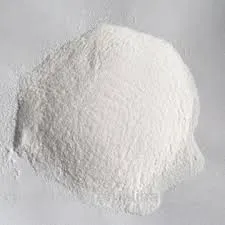
დეკ . 05, 2024 09:59 Back to list
Exploring the Properties and Applications of Hydroxyethyl Cellulose in Various Industries
Understanding Hydroxyethyl Cellulose (HEC) A Comprehensive Overview
Hydroxyethyl cellulose (HEC) is a non-ionic water-soluble polymer derived from cellulose, a natural polymer found in the cell walls of plants. The modification of cellulose to produce HEC involves the etherification process with ethylene oxide, resulting in a compound with various properties that make it highly versatile across multiple industries. This article will delve into the characteristics, applications, benefits, and considerations of HEC.
Properties of Hydroxyethyl Cellulose
HEC is recognized for its unique physicochemical properties, making it a valuable additive in numerous applications. Its chief characteristic is its high viscosity, which can be adjusted based on the concentration used. The polymer's water retention capacity is impressive, allowing it to maintain moisture and provide a smooth texture in products. HEC is also temperature-stable, making it suitable for use in varied temperatures without significant changes in performance.
Another critical feature of HEC is its pH stability. It can maintain its viscosity and performance across a wide pH range, making it ideal for different formulations. Moreover, HEC is biodegradable and non-toxic, which aligns with the increasing demand for sustainable and eco-friendly materials in today's market.
Applications of Hydroxyethyl Cellulose
HEC has found widespread use in various fields, including cosmetics, pharmaceuticals, food, and construction materials.
1. Cosmetics and Personal Care HEC is commonly used as a thickening agent and emulsifier in lotions, creams, shampoos, and other beauty products. Its ability to enhance texture and improve the spreadability of products is highly valued. Additionally, HEC can stabilize emulsions, ensuring a consistent formulation.
2. Pharmaceuticals In the pharmaceutical industry, HEC acts as a binder in tablet formulations, a suspending agent in liquid medications, and a controlled-release agent. Its biodegradability and biocompatibility make it an excellent choice for drug delivery systems.
hec hydroxyethyl cellulose

3. Food Industry HEC is approved for use in food products and is employed as a thickener, stabilizer, and emulsifier. It is particularly useful in sauces, dressings, and dairy products, providing texture and preventing separation.
4. Construction Materials HEC is utilized in the construction sector as an additive for cement and mortars. It enhances workability, improves water retention, and helps in achieving better adhesion of materials, leading to more durable constructions.
Benefits of Using Hydroxyethyl Cellulose
The incorporation of HEC into formulations offers several benefits. Firstly, it improves the texture and consistency of products, making them more appealing to consumers. Secondly, it enhances the product's performance by increasing viscosity and stability. In pharmaceuticals, the use of HEC can lead to improved bioavailability of active ingredients due to its ability to modify drug release rates.
Moreover, HEC is a versatile polymer that can be tailored for specific applications by adjusting its molecular weight and degree of substitution. This flexibility allows manufacturers to customize HEC to meet their precise needs, making it a cost-effective choice.
Considerations and Future Trends
Despite the numerous advantages of HEC, manufacturers must pay attention to possible limitations, such as reactivity with certain chemicals or changes in viscosity under extreme conditions. It is essential to conduct thorough compatibility tests to ensure optimal performance in specific applications.
Looking forward, the demand for eco-friendly and sustainable materials is likely to drive the growth of HEC in various markets. As industries prioritize environmental responsibility, HEC's biodegradable and non-toxic nature positions it as an attractive alternative to synthetic polymers.
In conclusion, hydroxyethyl cellulose is a versatile and valuable component across various industries, from cosmetics to construction. Its unique properties, coupled with an increasing push for sustainable materials, ensure that HEC will continue to play a crucial role in innovation and development for years to come. As research and application methods evolve, HEC's potential will likely expand, paving the way for new discoveries in this fascinating field.
-
tile-bonding-additives-for-stronger-bonds
NewsAug.22,2025
-
construction-grade-rdp-for-wholesale-needs
NewsAug.22,2025
-
trusted-wholesale-hec-partners
NewsAug.22,2025
-
hec-solutions-for-industrial-excellence
NewsAug.22,2025
-
construction-additives-need-hpmc-essentials
NewsAug.22,2025
-
hpmc-versatile-cellulose-ether-for-industries
NewsAug.22,2025







